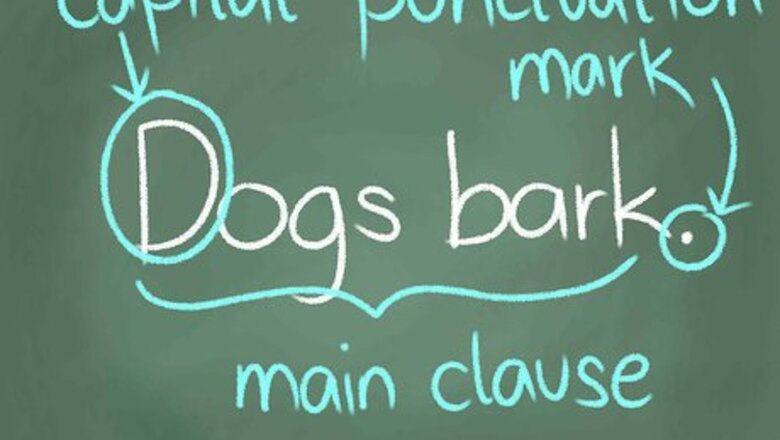
views
Breaking Down Elements of Sentence Structure
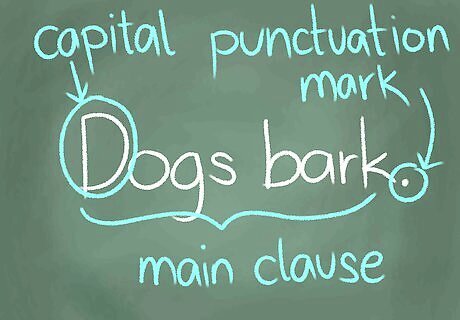
Learn the basic parts of a sentence. A complete sentence must begin with a capital letter, contain (at minimum) one independent clause, and end with a punctuation mark. An example of a complete sentence would be, "Dogs bark."

Identify your subject. In all of the sentence types, a main clause must have both a subject and a predicate. A subject is a noun or pronoun, such as the word, "dogs," in the example "Dogs bark." The subject describes who or what the sentence is about.

Identify your predicate. A predicate is an action verb, such as the word, "bark," from “Dogs bark.” The predicate of the sentence describes what the subject of the sentence does.
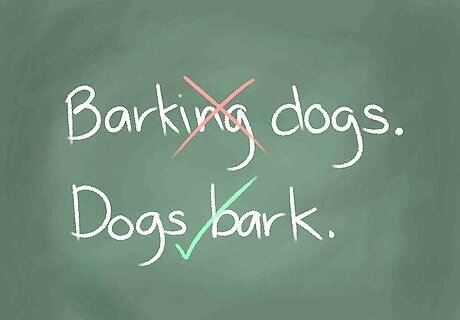
Ensure that there is a complete thought. A set of words that does not express a complete thoughts is called a “phrase.” The sentence “Dogs bark” is a complete thought. Phrases like, “at the beach" or “in the morning” are not. Another way of ensuring that the sentence expresses a complete thought is to check the verb. If the verb is transitive, then the sentence may not express a complete thought. For example, if the sentence was "The dog wants," then the sentence would be incomplete because that verb "wants" is transitive. Readers need to know what the dog wants to complete the sentence. Does the dog want food? Water? To go outside? However, "bark" is intransitive, which means that we have a complete subject and action. Therefore, "Dogs bark" is a complete sentence.

Sentences must end with a “punctuation mark.” Punctuation marks include the period (.), question mark (?) and exclamation point (!). Punctuation is a useful tool for identifying sentences.
Identifying the Type of Sentence

Determine the purpose of the sentence. The first step in identifying a sentence is to figure out what the sentence is trying to accomplish. Try to figure out whether a given sentence is explaining something, asking something, exclaiming something, or giving a command. For example, "Dogs bark" explains something about what dogs do, whereas "Stop barking!" is a command that you might give to a dog. Sentences may also have dual purposes. For example, a sentence that reads: "I enrolled my dog in an obedience course because he is always barking!" is explaining and exclaiming something.

Classify “declarative sentences.” Declarative sentences make a statement and end with a period, as in the example, "Dogs bark." A period indicates the stopping point of a thought. Another example of a declarative sentence might be "I take my dog to an obedience class twice per week."

Identify “interrogative sentences.” Interrogative sentence types inquire something of the reader and end with a question mark. As the name suggests, question marks indicate questions. An example of an interrogative sentence (or question) would be, "Do dogs bark?" A more complex example might be something like, "Why do dogs bark?" or "How do you get a dog to stop barking?"

Find “exclamatory sentences.” Exclamatory sentences indicate urgency or strong emotion. These types of sentences end with an exclamation point and they often express urgency or a strong emotion. For example, you might exclaim, "Quick! Catch the dog!" or "I am so annoyed by the dog's constant barking!"

Spot “imperative sentences.” Imperative sentences imply an order, directive or command. For example, "Dog, stop barking," is an imperative sentence. When identifying imperative sentences, it is worthwhile to note that they may end with either a period or an exclamation. Another example of an imperative sentence might be, "Susan, please go and see why the dog is barking."
Distinguishing Simple, Compound, and Complex Sentences

Evaluate the sentence's construction. In addition to determining the type (or purpose) of a sentence, it is also useful to assess sentence construction. You can do this by breaking the sentence down into parts. You will want to identify separate clauses, as well as identify if these clauses are “independent” or “dependent.” Clause: a group of related words that contain both a subject and predicate. Independent clause: a clause that contains a complete thought, such as “Dogs bark.” Dependent clause: a clause that does not contain a complete thought, such as “when a stranger comes.”

Identify simple sentences. A simple sentence is composed of just one independent clause. In this example, "Dogs bark" would be considered a simple sentence.
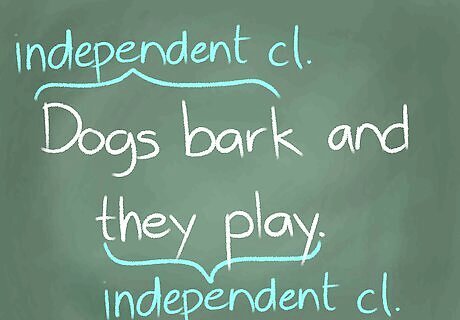
Classify compound sentences. Compound sentence types combine two independent clauses, using a conjunction to connect them, such as "for," "and," "nor," "but," "or," "yet," or "so." "Dogs bark" may be made into a compound sentence by using a conjunction (such as "and" or "but") to add another independent clause: "Dogs bark, and they play." You can also create a compound sentence by using a semi-colon. If you use a semicolon, then the ideas should be similar but related. For example, "Dogs bark to sound an alarm if they suspect danger; they bark to protect their people."
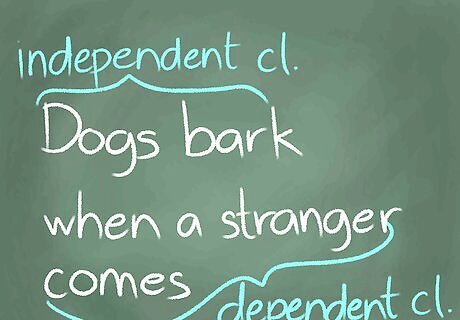
Identify complex sentences. Complex sentences combine one independent clause with one or more dependent clauses. Dependent clauses have both a subject and a predicate, but do not convey a complete thought. "When a stranger comes" is a dependent clause, which may be combined with the independent clause from the previous example to make a complex sentence: "Dogs bark when a stranger comes." A "dependent clause" will not convey a complete thought. When you hear the phrase "when a stranger comes," you are left needing more information. What happens when a stranger comes?
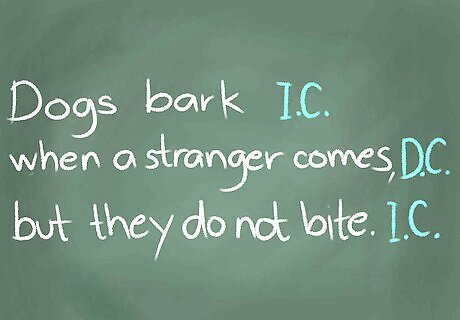
Spot complex-compound sentences. Complex-compound sentences are a combination of the complex and compound sentence structures. These types of sentences may have multiple independent and dependent clauses. An example of a complex-compound sentence is, "Dogs bark when a stranger comes, but they do not bite." This example uses an independent clause ("they do not bite"), separated by a conjunction ("but"), to create the new sentence. "They do not bite" is an independent clause because it expresses a complete thought. "They do not bite" can be made into its own complete sentence.




















Comments
0 comment